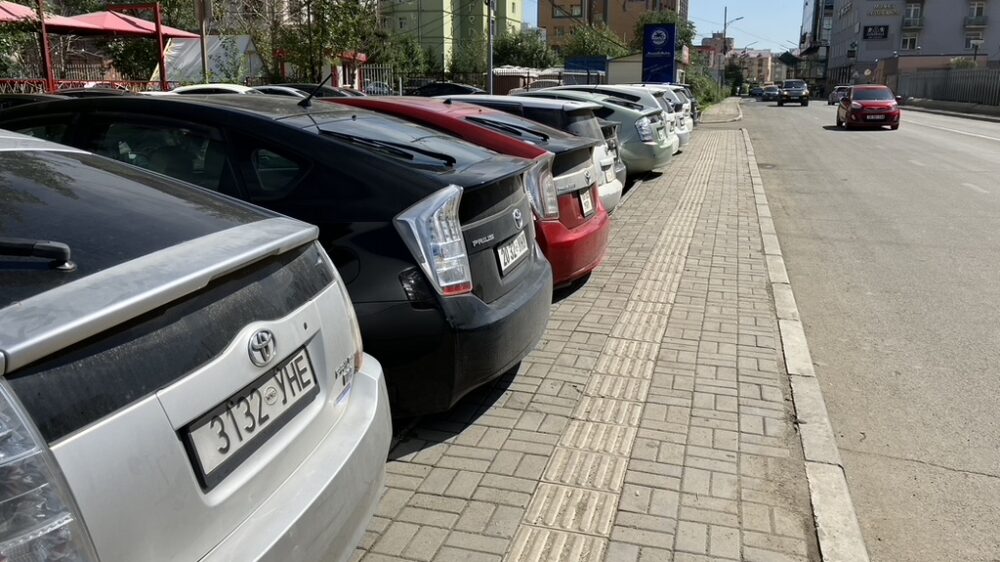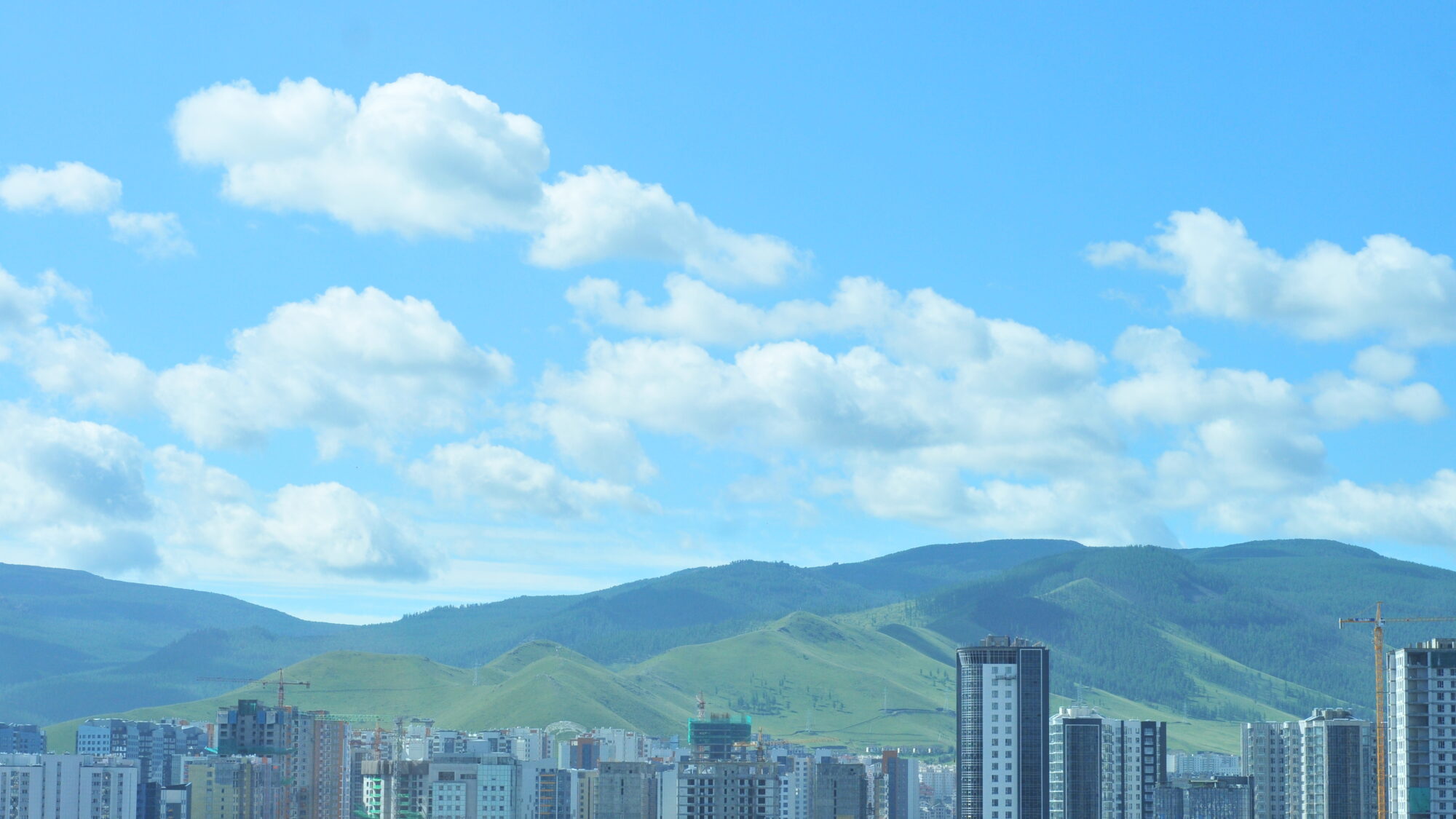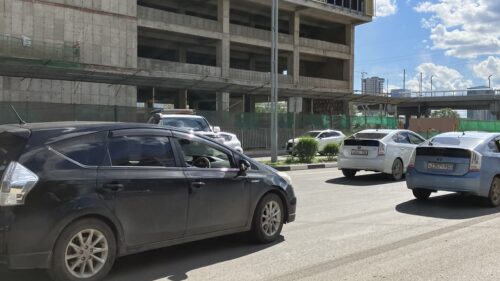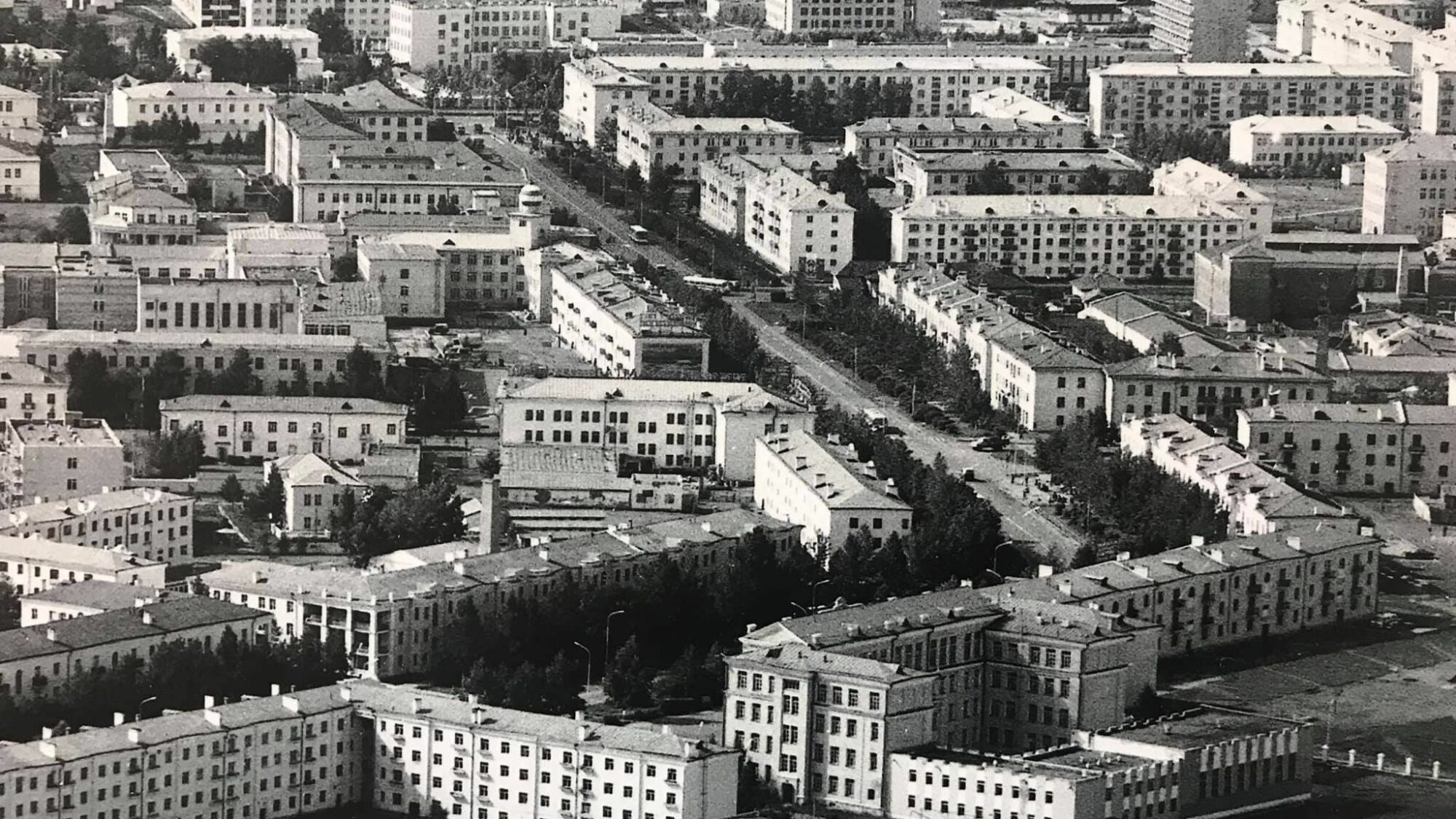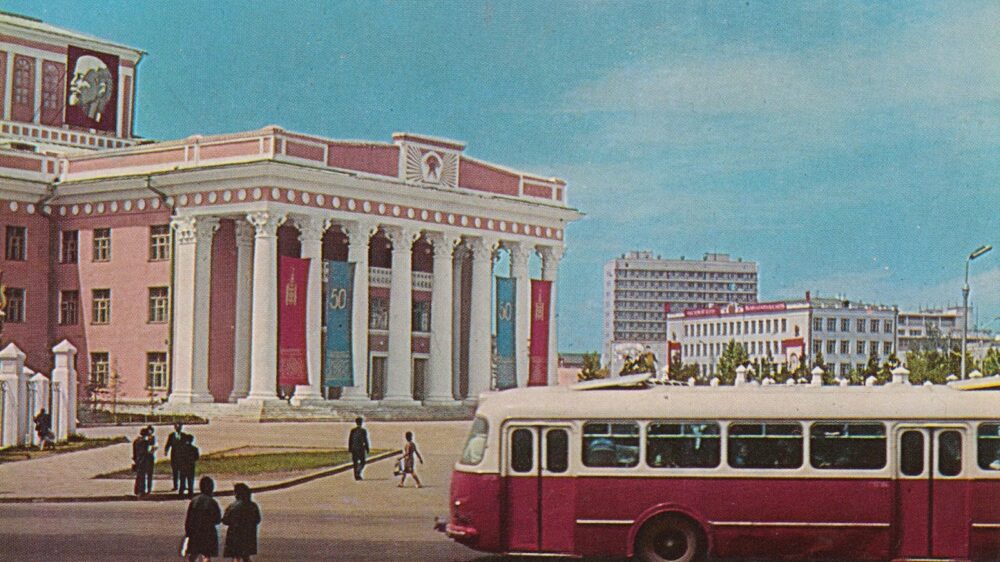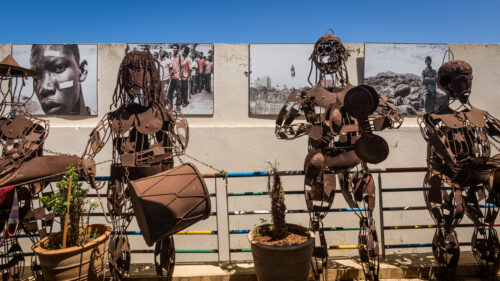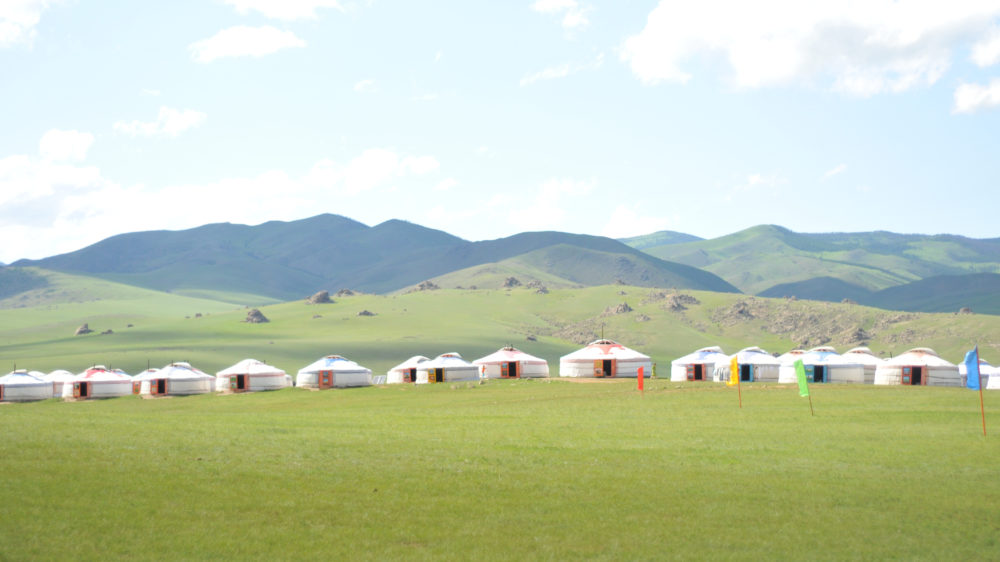red hero prius
The drive from the new Chengis Khann International Airport to city center in Ulaanbaatar is 55 km. Initial planning for the airport was done in 2006 with a US$385 million 40-year loan agreement signed between the Government of Mongolia and the Japan Bank for International Cooperation. It was built and opened on the 4th of July in 2021. The road is also new: rolling and rural for the first 30 minutes until it crests a ridge and enters into Ulaabaatar, the capital of Mongolia. The history of the capital is ethereal and nomadic. It was an idea before it was locked into any certain geography. Originally it was called Örgöö, or palace-yurt, a mobile monastery-town part politic, part pilgrimage site, and would move from place to place depending on grazing patterns, war, and the needs of its inhabitants. It was a nomadic capitol. It only settled in this valley on the Tuul river permanently in the mid 1700’s. October 29, 1924 the city was renamed Ulaanbaatar, meaning “Red Hero”.
As you descend into the valley, you soon notice the four smokestack complexes that occupy the view like some 1950’s post apocalyptic magazine, plumes of smoke billowing out to the sky, a sky that is worshiped as a god according to ancient tradition here. I was told as a child that smokestacks were cloud factories, a disturbing explanation for the damage done by the offshoot of power and profits. Four coal powered plants heat the city through a network of hydro pipes netting the city’s apartments and homes. You can see these all over, large rusted pipes flowing from one side of a road to another. Mining is big business in Mongolia, home to some of the world’s largest mining projects with coal, copper, and gold being the focus. A grim capitalistic push in a place that is so obviously linked to land.
Extreme temperatures and nomadic culture makes for a feel of hardiness and self-sufficiency, stereotypes of cowboy tough, which is why, when mixed with the smokestacks, I was confused by the plethora of Toyota Prius’s all over the place. The quantity is uncanny, a flotilla of Priuses on every street. I thought at first it must be some sort of strange car convention, but it so permeates the streets, and there was no fanfare, no parade, no marquee welcoming Prius car owners from around the globe, it was just day to day life in Ulaanbaatar. A car that has been used in more standup routines since it first hit the international market in 2000 than any other car, it is the butt of most automobile jokes in the 21st century (sorry, Skoda).
In 1993, the same year that brought us Cyprus Hills Black Sunday and the Meatloaf hit “I’d Do Anything for Love (But I Won’t Do That)”, an in-house discussion began in Toyota headquarters for the future of the relationship between automobiles and the oil industry. The Iraqi invasion of Kuwait and Gulf War were recent enough to set into stone a fear of a dependency to oil, and some industries began planning for the future. Satoshi Ogiso, a Toyota employee and developer who worked on the Prius projects said “Eiji Toyoda, honorary chairman at the time, urged us to start thinking about a new vision for cars, one for the medium and long term that would prepare us for the 21st century. That’s when we started the first study that would lead to the Prius.” Ogiso said the goals of this project revolved around the environment, energy, and safety. October 14, 1997 at a hotel in Roppongi, Tokyo, with those ideals in mind, the prototype Prius was presented to the world. Later that year, the Prius went on sale in Japan and was available at all four Toyota Japan dealership chains, making it the first mass-produced hybrid vehicle. It was released on the international market in 2000 thus cementing this car as the antithesis of big oil, the rust belt, the “muscle” car, meat and potatoes. For years the American auto industry had linked machismo with metal, size of engine, loudness of an idle, the “car” became a barometer of perceived power. The Prius, by its efficiency and hybridness, in the early 2000’s, became a political statement, a polarizing rolling billboard, and the subject of many jokes.
I started the University of Georgia as a freshman in the summer of 1997. For the first few years I was unconcerned with deciding on a major; I was just happy to be in the world of higher education, it suited me. I like the social side of UGA as well as the classes, at least some of them. Eventually I landed in philosophy and felt at home. In the late fall of 2000 I decided to stop eating meat, not out of religious reasons, or environmental, but as a philosophical experiment to see what sort of reactions I would receive from friends and family. I had spent my high-school years as an active member of the 4-H club, a network of organizations all under the branch of the Cooperative Extension System, a US Federal program run by the U.S. Department of Agriculture. I loved it. I loved 4-H and everything it was able to do for me, and it also made transparent how the agriculture industry worked. Within 4-H you can join themed clubs like Dairy Cattle Quiz Bowl, or Public Speaking competitions, or Consumer Judging. It was a way to empower the agricultural kids in rural Georgia with skills like “how to interview” or “how to market your livestock”. I came to learn how the beef industry worked, chicken, lumber, etc. and I understood its cultural values and promotional ideas it bestowed on the market, that meat was good for you, and good for America.“Beef, it’s what’s for dinner”. So by becoming a vegetarian, I was experimenting in dangerous waters, which was the point. My project/experiment was to try and quantify the cultural relationships with eating meat as something that was more important than religion, at least in Georgia, a hard goal in the bible belt of the US South. In the end I was unable to figure out how to quantify such a thing, but I was able to experience fear, judgment, and confusion from some of my peers and community when I told people I did not eat meat, equated with a moral judgment, my not eating meat meant, in the minds of many, that I was judging those who do. It was fascinating. I was asked to leave dinner parties.
The large industries of North America are directly tied to the cultural values of Americanness; the relationship between slavery, cotton, lumber, oil, cattle, and cars. The Prius was the same perceived moral judgment as me not eating meat; not only is it equated with being against oil and gas, it is “foreign”, it is Japanese.
I forget that these same values are not present in Mongolia, at least not in the same way, that the country has a different relationship with both meat and cars, a different relationship with space, ownership, and ideas of home. There are different things at play.
There are fashions and trends in Ulaanbaatar. There are niche scenes here that could be described as dark leather and heavy metal, there are silks and cashmere, navy suits, Harley Davidson motorcycles, Russian UAZ-452 vans and short, tough horses. There is brutalist architecture and rusted heating pipes, it looks industrial and functional. It looks like Detroit feels in the mind. It is in these stereotypes that I fell into a trap of bringing in my own pop culture stereotypes on a Prius not fitting in.
The Aesthetic of the Prius is acquired, it is angular and oblong. But it isn’t a far throw from the UAZ aesthetic, or the Russian copy Ural Motorcycles. In 1940, the Soviet Union “acquired” the design for the BMW R71 sidecar and produced their own in 1941 onwards until today. China then followed suit with the 長江 Cháng Jiāng, a copy of the copy, thrice removed from the original. Both the Ural and the Cháng Jiāng can be described as chunky, lumpy design, and I would say the same with the Prius, it looks like it is a copy of a copy already.
Then there is the function. In January temperatures can plunge to -40 celsius/fahrenheit in Ulaanbaatar, temperatures you don’t want to have issues with your engine starting. With its battery function, the Prius always starts, which can’t be said of a diesel motor. I have witnessed friends building small fires under their Land Cruisers to heat up the engine bloc in the winter months so the car can start, a sight one would not find with a Prius owner. The Prius is reliable.
There is the price point. Toyota isn’t making premium on the market here as the majority of the Prius on the road are used, which makes them affordable, $2-6k or so. Mongolia also charges no excise or air pollution tax on hybrids. Its hardiness in the cold months also means you don’t need a garage to store it, which saves, and in a cash economy that is helpful for flow. The efficiency of the motor helps one’s wallet as well, with a 58 mile per gallon ratio in the city, it is damn hard to beat even though it might not be the zippiest car around. 60% of the imported used cars in 2019 were Prii (the plural of Prius?), there are over a million of them in Ulaanbaatar.
The conquering of the Mongol Empire, at its most vast, from the Danube to the Pacific Ocean, can be credited, at least in part, to the horse; to the Mongolian horse is a particular. Today this breed is mostly unchanged from the time of Chengis Khaan. It is a short horse, small but sturdy, known for stamina and hardiness in extreme conditions, it is reliable. They are prized for needing little fuel of food and water and are usually set to roam for the year, meaning no stables. They are affordable and efficient. Their ability to search beneath the snow and find their own food enabled the Mongol army to mount successful winter campaigns against Russia. Their long-distance endurance allowed warriors to outlast enemy cavalry during battle. The only weakness of the Mongol horse was that it was slower than the other breeds.
There are about 4 million horses in Mongolia currently, outnumbering the humans who clock-in at 3.4 million. There are 1 million Prius in Mongolia, and that number is growing.
